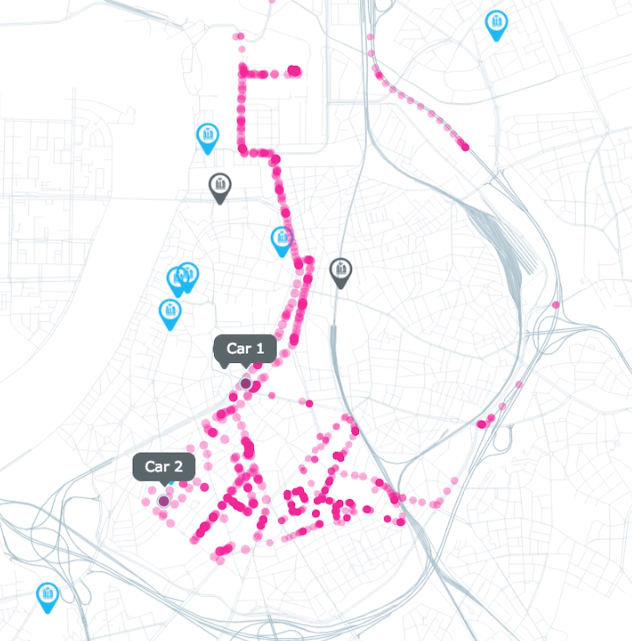Bpost Smart Cities
Air pollution forms an important societal challenge for all cities around the world. To study this phenomenon, air quality data has to be collected. Gathering this kind of data at scale typically requires a large amount of relatively expensive sensors, which can become costly and maintenance intensive. Within the iMinds smart city initiative City of Things, it was decided to take a novel proof of concept approach with mobile sensors, built on cars of the postal services already driving around in the city of Antwerp on a daily basis. This results in good coverage of the city with minimal effort.
To realize this mobile setup, iMinds built on its IoT experience for connecting air quality sensors over its own LoRaWAN network, which stream their data in real-time to the innovative City of Things big data platform. The result is an attractive visualisation on a map, which is easily comprehensible by end users.

This air quality demo highlights the strengths of a smart city technology lab in a real city.
GreenWeCan
iMinds’ GreenWeCan project (Feb. 2011- Jul. 2013) investigated the development of a “green” dual wireless city network infrastructure, consisting of a wireless sensor network and a cooperative Wi-Fi access network. These networks were demonstrated in a live test environment in the busy city centre of Ghent, and they support advanced communications services and aim towards a smart sustainable city.
GreenWeCan researchers developed an outdoor Wi-Fi network with several access points. The network provides users with Internet connectivity through seamless switchovers, from one access point to another.
A grid of short-range wireless sensors was developed to transfer and communicate information through diagnostic sensing. One functional use of this sensor network is a parking sensor device. It allows end users to monitor and be directed towards empty parking spots, through a mobile app. Another function of the sensor technology is its monitoring capabilities for garbage bins. The sensors, installed within garbage bins, indicate when the bin is full. The various applications of the GreenWeCan technology make it an important step for living in smart cities.

The “green” wireless city network infrastructure enables innovative services like monitoring of parking spots and garbage bins
